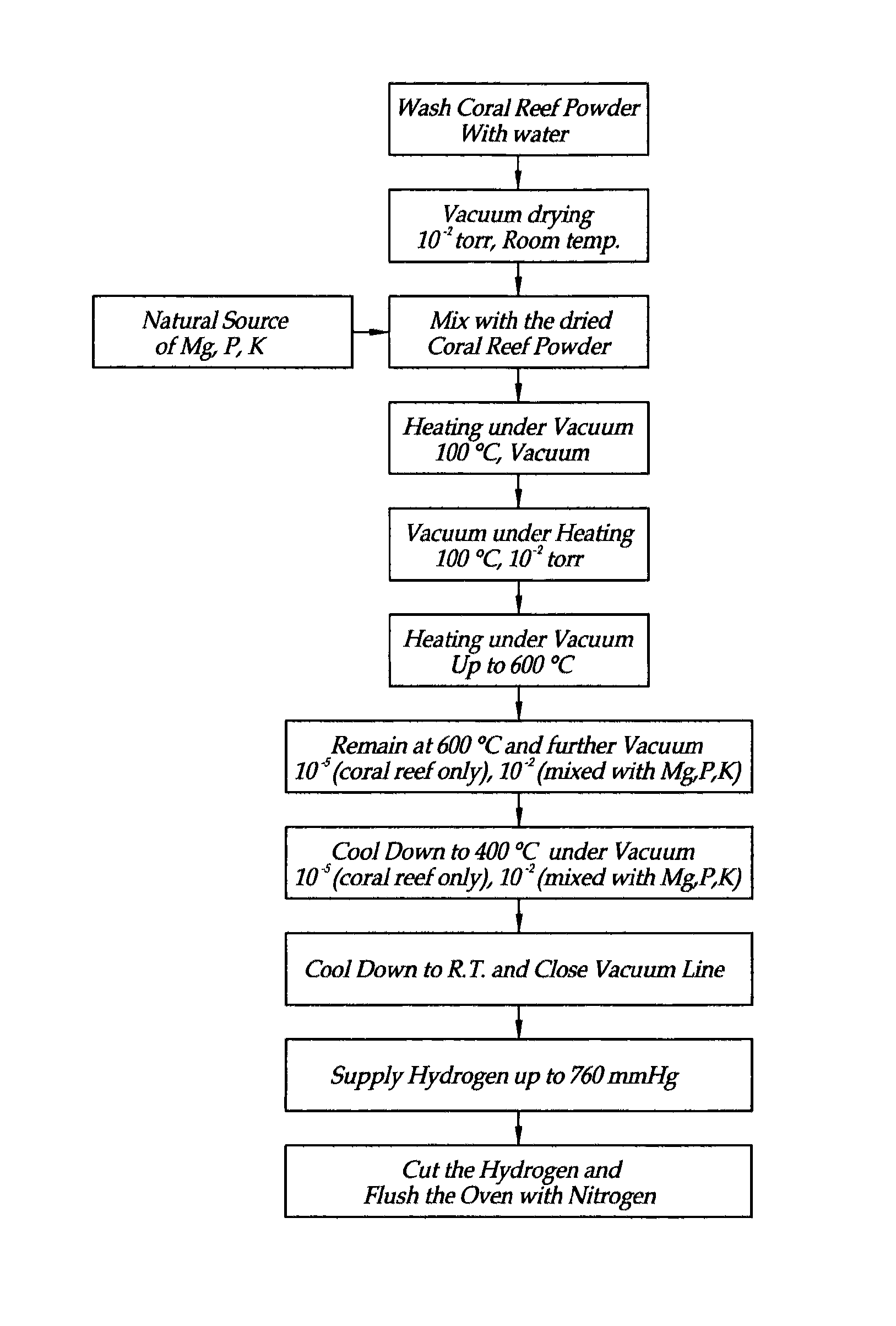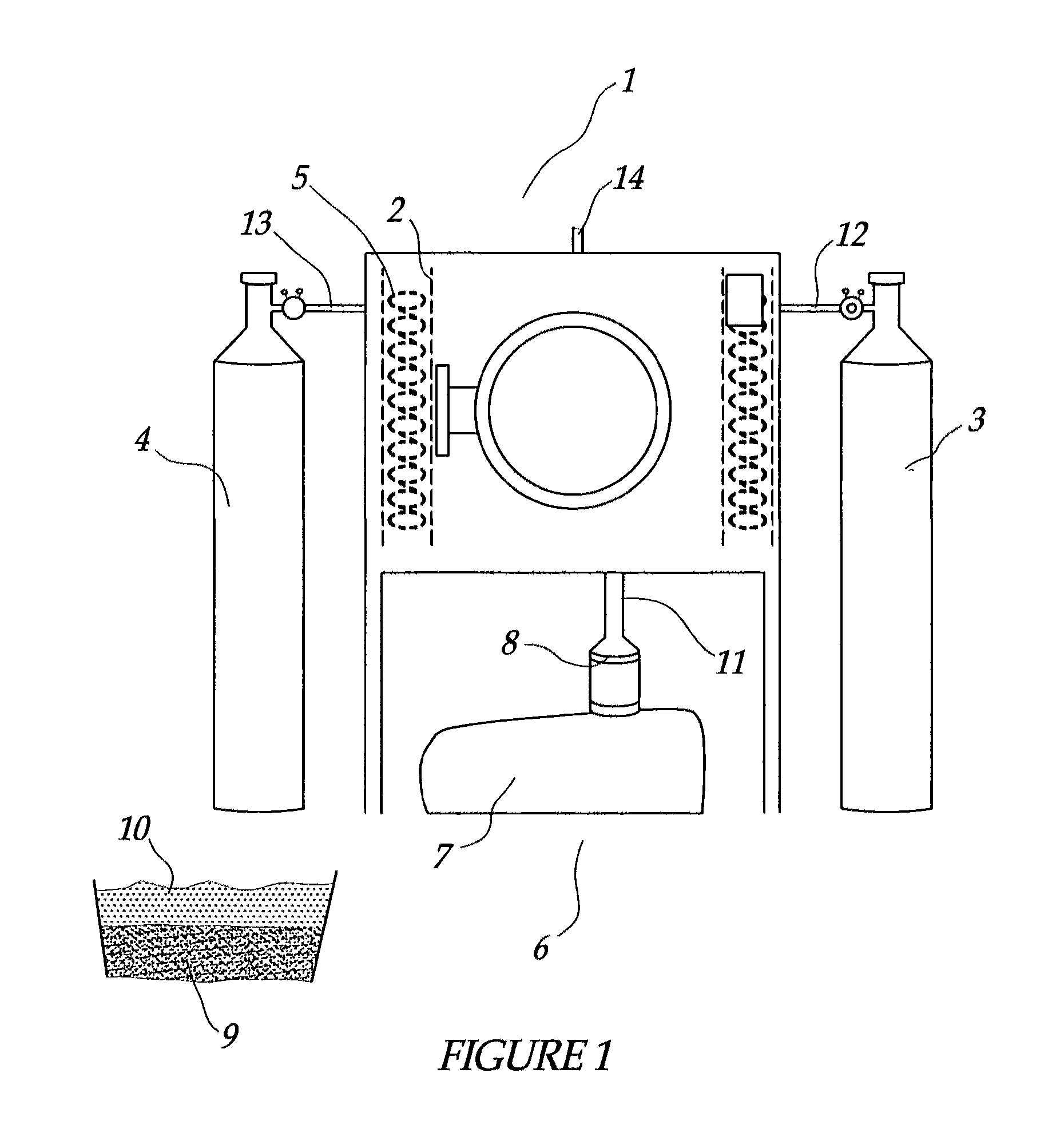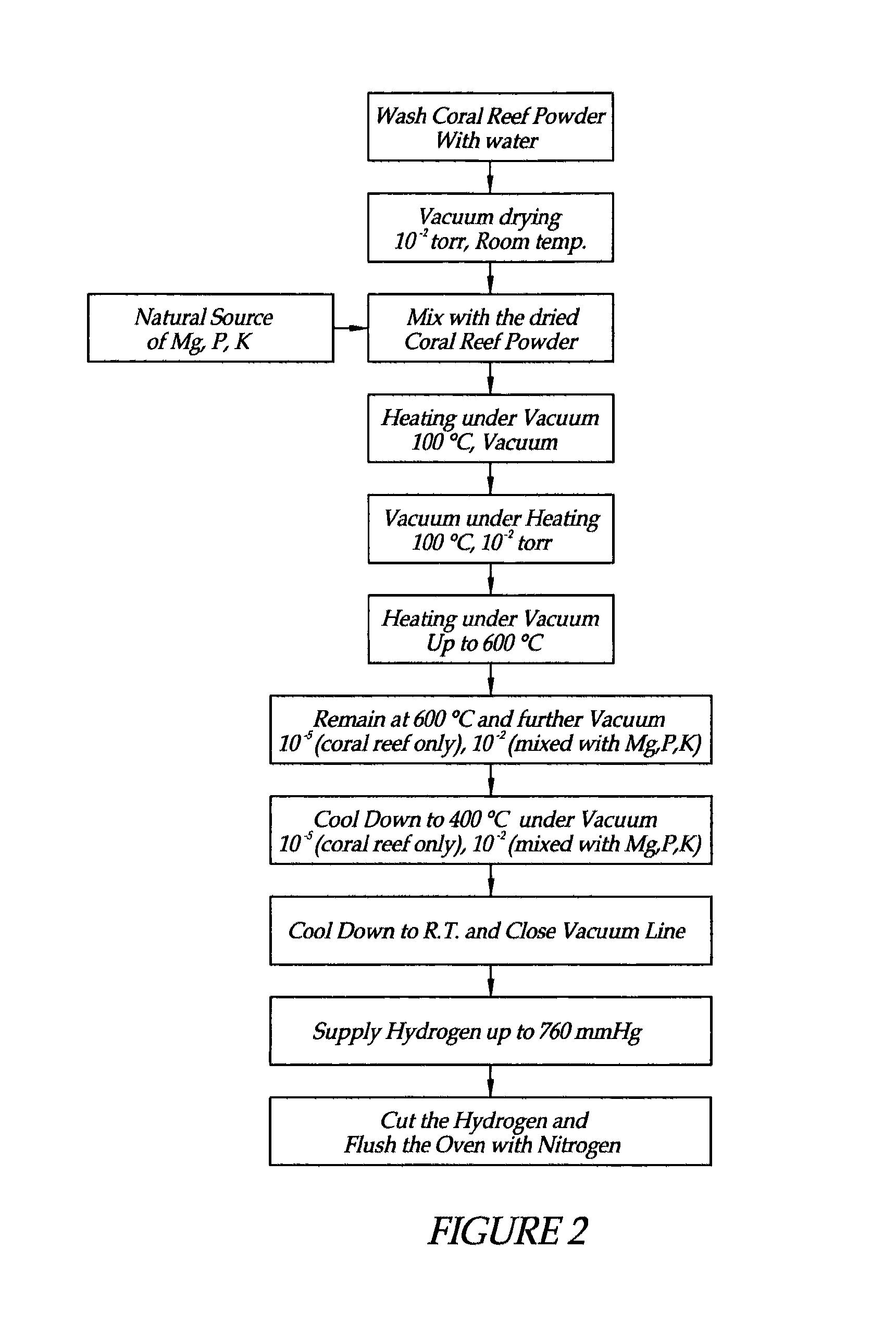Method of manufacturing digestible powder that generates hydride ion (H-)
a technology of hydride ion and digestible powder, which is applied in the direction of magnesia, oxygen/ozone/oxide/hydroxide, biocide, etc., can solve the problems of not clear and dangerous in terms of cancer, and achieve the effect of reducing the maximum treating temperature and vacuum pressure, and being more economical
- Summary
- Abstract
- Description
- Claims
- Application Information
AI Technical Summary
Benefits of technology
Problems solved by technology
Method used
Image
Examples
example 1
[0041]The first step is to wash powder of natural coral reef (9), which was provided from market, with water (10).
[0042]The second step is to put the coral reef powder (9), washed with water, into the vacuum oven (2) and turn on the mechanical vacuum pump (7) at room temperature until the vacuum gauge reads 10−2 torr.
[0043]The third step is to increase the oven (2)'s temperature at a speed of 5° C. / min up to 100° C. while the mechanical vacuum pump (7) is turned on. Then the vacuum pressure inside the vacuum oven (2) will increase due to coming out water.
[0044]The fourth step is to maintain the vacuum oven (2)'s temperature at 100° C. until the vacuum pressure reach down 10−2 torr. Remain at the temperature and vacuum pressure 30 minutes.
[0045]The fifth step is to increase the vacuum oven (2)'s temperature 5° C. / min up to 600° C.
[0046]The diffusion pump (8) installed on the vacuum pump is turned on during the process. The sixth step is to maintain the oven (2) temperature at 600° C....
example 2
[0052]The first step is to wash powder of natural coral reef (9), which is provided from market, with water (10).
[0053]The second step is to put the coral reef powder (9), washed with water, into the vacuum oven (2) and turn on the mechanical vacuum pump (7) at room temperature until the vacuum gauge reads 10−2 torr.
[0054]The third step is to mix the washed and dried coral reef powder (9) with mixture of magnesium, phosphorus, and potassium. Sources of the magnesium, phosphorous and potassium are, included but not limited to, (NH4)MgPO4.6H2O (struvite), MgSO4. KCl.H2O (Kainite), K2SO4.MgSO4.6H2O (Schönite), K2SO4.MgSO4.4H2O (Leonite), and K2SO4.2 MgSO4 (Langbeinite). Total content of the summation of the three elements are 1 grant per 100 gram of dried coral reefs. The weight ratio of magnesium:phosphorus:potassium is 2:4:4.
[0055]The fourth step is to increase the oven (2)'s temperature at a speed of 5° C. / min up to 100° C. while the mechanical vacuum pump (7) is turned on. Then the...
example 3
[0064]The first step is to wash powder of natural coral reef (9), which is provided from market, with water (10).
[0065]The second step is to put the washed coral reef powder (9) into the vacuum oven (2) and turn on the mechanical vacuum pump (7) at room temperature until the vacuum gauge reads 10−2 torr.
[0066]The third step is to mix the washed and dried coral reef powder (9) with mixture of magnesium, phosphorus, and potassium. Sources of the magnesium, phosphorous and potassium are, included but not limited to, (NH4)MgPO4.6H2O (struvite), MgSO4. KCl.H2O (Kainite), K2SO4.MgSO4.6H2O (Schönite), K2SO4.MgSO4.4H2O (Leonite), and K2SO4.2 MgSO4 (Langbeinite). Total content of the summation of the three elements are 2 gram per 100 gram of dried coral reefs. The weight ratio of magnesium:phosphorus:potassium is 1:1:1.
[0067]The fourth step is to increase the oven (2)'s temperature at a speed of 5° C. / min up to 100° C. while the mechanical vacuum pump (7) is turned on. Then the vacuum pressu...
PUM
 Login to View More
Login to View More Abstract
Description
Claims
Application Information
 Login to View More
Login to View More - R&D
- Intellectual Property
- Life Sciences
- Materials
- Tech Scout
- Unparalleled Data Quality
- Higher Quality Content
- 60% Fewer Hallucinations
Browse by: Latest US Patents, China's latest patents, Technical Efficacy Thesaurus, Application Domain, Technology Topic, Popular Technical Reports.
© 2025 PatSnap. All rights reserved.Legal|Privacy policy|Modern Slavery Act Transparency Statement|Sitemap|About US| Contact US: help@patsnap.com



